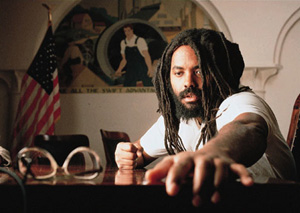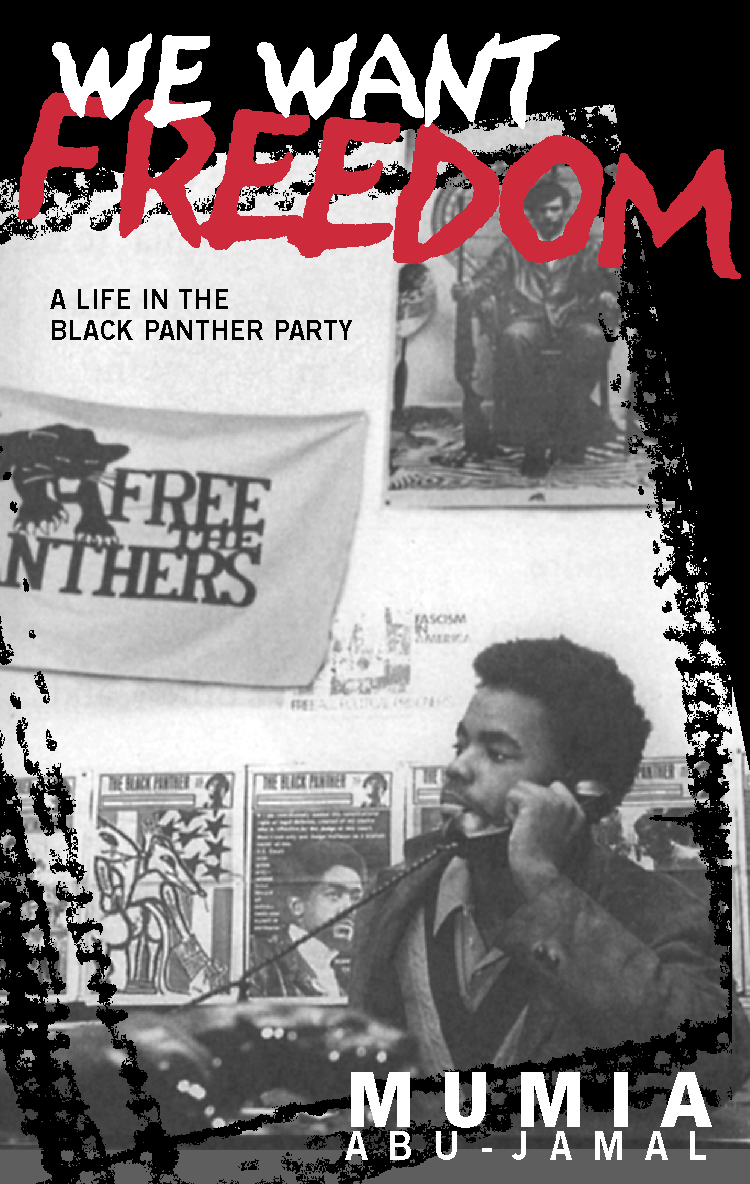READY TO PARTY: MUMIA ABU-JAMAL AND THE BLACK PANTHER PARTY |
|
| by Todd Steven Burroughs, Ph.D. special to Prof. Kim's News Notes |
|
 Part Three:'ARMED AND DANGEROUS': TRACKED BY THE FBIBy Todd Steven Burroughs Most teenagers are tracked by parents, friends and families. Because he was a member of the Black Panther Party, Wes Cook, a teenager from Philadelphia who later re-named himself Mumia Abu-Jamal, was tracked by the Federal Bureau of Investigation. More than 600 sheets of paper would be compiled on Cook from 1969, when he had turned 15, until about 1974, the year of his 20th birthday. Cook was only a Party member from May 1969 until October 1970—less than two years. The FBI kept up its tabs on Cook for more than three years after he left the Party. The teenaged Cook had no criminal record. Like other authorities, the FBI considered the Panthers—which had chapters and branches in more than a dozen cities within two years of its 1966 founding—little more than a hate group. Which is not completely surprising, when it is taken into account that a frequent Panther rally chant was "Off The Pigs." The FBI, those vanilla custodians of truth, justice and the American way, somehow failed to understand that the chant was a reaction to decades of police brutality specifically and centuries of white brutality generally. The tone of a report on an August 1969 rally Cook attended is typical of white haughtiness:
Another FBI report on the rally:
Cook was targeted for federal surveillance because he was a Panther. When the Philadelphia Panther debuted at a May Day rally in Philadelphia in 1969, the FBI decided to open files on all the Party participants. So the bureau—which, during the previous year, had called the Party the greatest threat to America’s internal security—actually spent significant time and resources shadowing someone whose occupation they had to list as "high school," even when Cook dropped out to join the Party fulltime. The FBI had long tentacles. It tracked Cook via its many Party informants around the nation. The bureau knew when he was on the phone in the Philadelphia Panther office and what he said. When he spoke at rallies. When he was transferred to Panther offices in New York and Oakland. When he was "Officer Of The Day" in the Panther National Headquarters in Oakland (May 11, 1970, according to bureau documents relaying information from informants). Of course, the monitoring had a dual purpose: to wage constant psychological warfare against the Party, and to attempt to catch the Panthers red-handed in illegal activity. March 17, 1970 memorandum:
The reason for the search was blotted out. Clipped newspaper articles by and about Cook are a constant in his files. The periodicals: The Militant, then and now the organ of the Socialist Workers Party; The Philadelphia Tribune, then and now the city’s leading Black newspaper; The Temple (University) News, the student newspaper of Temple University; The Black Panther; Babylon, a New York-based newspaper affiliated with Eldridge Cleaver, and The Distant Drummer, an alternative paper serving Philadelphia. Together, they delineate an era in which young people demanded change without asking for permission—and definitely without fearing consequences. The bureau acknowledged a grudging respect, of sorts, for its subject. A memorandum dated October 26, 1970 reads: "Cook has worked in Philadelphia, New York and the BPP national office in Oakland, California, where he was officer of the day and worked on the BPP newspaper. Although he is only 16 years old and has no informant potential, he possesses much intelligence and evidentiary information of great interest if he will talk." He never did, even when he put the Party in his past. Dec. 3, 1970 memorandum:
From a Death Row cell, Mumia Abu-Jamal became a scholar of the Party. Detailing the FBI’s subversive and sinister role in helping to destroy dissent throughout the 20th century, Abu-Jamal wrote the following in "We Want Freedom," his history of the Party:
(NEXT: Leaving The Party) Copyright © 2004 by Todd Steven Burroughs. Used with permission of the author. |
Table of Contents
|

|
|
|
|
| photo of Mumia Abu Jamal | |
| photo of Steven Todd Burroughs
from Research Channel |
|
